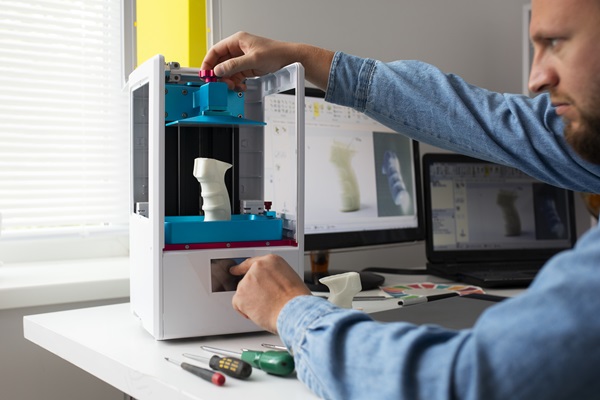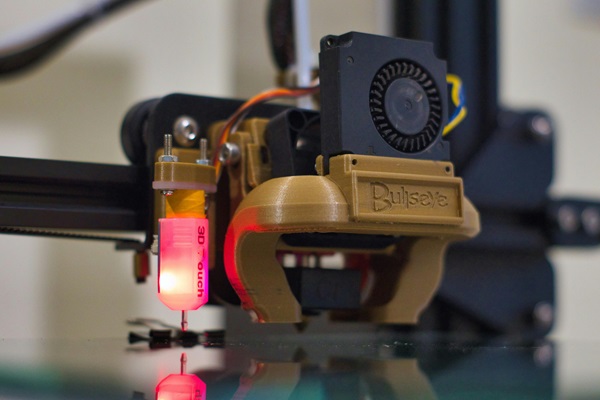Welcome to the remarkable world of 3D printing technology, where pixels on a screen evolve into tangible objects. This cutting-edge technology has revolutionized industries, empowered innovators, and sparked creativity like never before.

3D Printing Technology Overview
I. Historical Perspective
Origins of 3D Printing
The story begins in the 1980s when Charles Hull developed the first stereolithography apparatus, paving the way for additive manufacturing. Over the decades, concepts became realities as technologies like Fused Deposition Modeling (FDM) and Selective Laser Sintering (SLS) emerged.
Key Milestones in 3D Printing History
Significant milestones include the creation of the first 3D-printed human organ, pioneering 3D-printed houses, and NASA’s use of 3D printing technology in space. These events showcase a broad spectrum of possibilities.
Early Applications and Limitations
Early adopters were predominantly in the aerospace and automotive sectors, using 3D printing technology for prototyping and rapid part production. However, the limitations of materials and high costs hindered widespread adoption.
II. How 3D Printing Works
Additive Manufacturing Process
3D printing operates on an additive principle, layering material atop material. This contrasts with traditional subtractive manufacturing, which carves from a solid block. The result is less waste and greater design freedom.
Types of 3D Printing Technologies
Diverse technologies such as Stereolithography, Fused Deposition Modeling, and Selective Laser Sintering offer distinct benefits, ranging from precision to speed.
Materials Used in 3D Printing
From plastics and metals to biodegradable filaments and ceramics, the array of materials available for 3D printing continues to expand, enabling more applications.
III. Key Players in the 3D Printing Technology Industry
Industry Leaders
Companies like Stratasys, 3D Systems, and HP have been at the forefront of 3D printing technology, driving innovation and setting industry standards.
Innovative Startups
Startups like Carbon and Formlabs have pushed boundaries with advanced resin-based 3D printing and materials science, opening up new horizons.
Major Applications in Various Sectors
3D printing technology has transcended its roots and is now vital in healthcare, aerospace, automotive, fashion, and more. The versatility of this technology is staggering.
IV. Benefits of 3D Printing
Cost-Effective Prototyping
Businesses can reduce costs and speed up product development with 3D printing technology, allowing for rapid iterations and testing.
Customization and Personalization
In the fashion and healthcare industries, 3D printing enables personalized products that fit perfectly, from custom orthopedic implants to bespoke fashion items.
Sustainability and Reduced Waste
Traditional manufacturing often results in substantial waste. 3D printing, with its additive process, minimizes waste and supports sustainable practices.
V. Challenges and Limitations
Printing Speed and Size
While 3D printing offers numerous advantages, it is not the fastest process for mass production, and large-scale items can be time-consuming.
Material Constraints
The range of materials, while expanding, is still limited compared to traditional manufacturing, restricting some applications.
Intellectual Property Concerns
The ease of sharing digital files raises concerns about intellectual property rights, piracy, and counterfeiting.
VI. Printing in Healthcare
Prosthetics and Orthopedics
Custom prosthetic limbs, implants, and orthodontic devices are transforming the lives of patients.
Bio-printing and Tissue Engineering
Bioprinting technology has made strides in creating functional organs, revolutionizing transplantation possibilities.
Drug Development and Pharmaceutical Industry
The pharmaceutical sector harnesses 3D printing for personalized medication, enhancing drug delivery systems.
VII. 3D Printing in Aerospace and Automotive
Rapid Prototyping in Aerospace
In aerospace, 3D printing accelerates prototyping and the development of lightweight, complex components.
Custom Parts Manufacturing in the Automotive Industry
The automotive sector embraces 3D printing for producing customized parts, reducing costs, and enhancing vehicle performance.
Reducing Weight and Fuel Consumption
3D-printed parts contribute to lighter aircraft and cars, leading to increased fuel efficiency.
VIII. 3D Printing in Architecture and Construction
Building Prototyping
Architects are using 3D printing technology to create detailed prototypes and models of buildings before construction.
Sustainable Construction Practices
3D printing technology is revolutionizing sustainable construction, utilizing recycled materials, and minimizing waste.
Innovative Architectural Designs
The technology fosters creative architectural designs that were once deemed unbuildable.
IX. 3D Printing in Fashion and Jewelry
Customized Clothing and Accessories
Fashion designers employ 3D printing to craft unique clothing, shoes, and accessories tailored to individual preferences.
Sustainability in Fashion
3D printing technology in fashion supports sustainability by reducing waste and energy consumption.
Artistic Possibilities
Artists delve into the realm of 3D printing, producing sculptures, jewelry, and avant-garde fashion pieces that blur the lines between art and technology.
X. Printing in Education
Enhancing Learning Experiences
Educators incorporate 3D printing to make learning more interactive and engaging for students.
STEM Education and Maker Movement
3D printing is a cornerstone of STEM education, promoting a hands-on approach to learning and fostering innovation.
Access to Educational Resources
The availability of affordable 3D printers and open-source designs empowers schools and institutions to access this technology.

XI. 3D Printing and the Environment
Sustainable Manufacturing
3D printing aligns with green manufacturing by reducing waste and energy consumption.
Recycling and Reusing Materials
Researchers explore methods to recycle and reuse materials in 3D printing, further minimizing environmental impact.
Reduced Carbon Footprint
The localized production enabled by 3D printing diminishes the carbon footprint associated with global shipping.
XII. Legal and Ethical Considerations
Intellectual Property Issues
The digital nature of 3D printing raises questions about copyright, patents, and the protection of intellectual property.
Ethical Use of 3D Printing
Debates ensue about the responsible use of 3D printing technology in fields like bioprinting and weapons manufacturing.
Regulatory Framework
Governments are developing regulations to address the ethical and legal complexities of 3D printing.
XIII. Future Trends in 3D Printing
Advancements in Printing Speed
Research is ongoing to increase the speed of 3D printing for broader industrial adoption.
New Materials and Applications
Scientists are exploring novel materials and applications, from printing with lunar regolith to creating edible foods.
Integration with Other Technologies
3D printing is converging with artificial intelligence, blockchain, and other technologies to unlock new capabilities.
XIV. Case Studies
Real-World Examples of 3D Printing Success
Real-life success stories, like the use of 3D printing to produce affordable prosthetics in developing countries, illustrate the transformative power of this technology.
Impact on Businesses and Industries
Businesses that embrace 3D printing gain a competitive edge, reduce production costs, and innovate faster.
Inspiring Innovations
Innovative projects like the construction of 3D-printed bridges and the creation of 3D-printed food showcase the limitless possibilities of this technology.
XV. DIY 3D Printing: At-Home and Makerspace
Consumer-Friendly 3D Printers
Affordable, user-friendly 3D printers make it accessible for hobbyists and tinkerers to experiment with this technology.
Community and Educational Makerspaces
Makerspaces are fostering a collaborative atmosphere where enthusiasts can learn, share, and create together.
Hobbyist and Maker Culture
3D printing is a cornerstone of the maker culture, encouraging innovation and hands-on creation.
XVI. 3D Printing and Art
Artists Embracing 3D Printing
Visionary artists are incorporating 3D printing into their creative processes, resulting in captivating, three-dimensional artworks.
Sculptures and Installations
Sculptors and installation artists use 3D printing to construct intricate and large-scale pieces that push artistic boundaries.
The Intersection of Art and Technology
The fusion of art and technology through 3D printing challenges traditional notions of artistic expression.
XVII. The Role of 3D Printing in Disaster Relief
Rapid Response and Prototyping
3D printing enables quick responses to disaster situations, providing essential items and prototypes on demand.
Providing Essential Supplies
In disaster-stricken areas, 3D printing can produce critical supplies such as medical equipment, shelters, and tools.
Humanitarian Efforts
3D printing supports humanitarian missions, offering a swift and adaptable solution in times of crisis.
XVIII. Collaborative 3D Printing Projects
Open-Source Initiatives
The open-source nature of 3D printing encourages global collaboration and knowledge sharing.
Crowdsourcing and Innovation
Crowdsourced 3D printing projects harness collective creativity to address complex challenges.
Global Collaboration in Times of Need
The global community rallies to provide 3D-printed solutions during crises, exemplifying the power of collaboration.
XIX. Future Challenges and Possibilities
Overcoming Technical Hurdles
Researchers are dedicated to overcoming challenges like material limitations and scaling up 3D printing technology.
Expanding Accessibility and Education
Efforts are underway to make 3D printing technology more accessible and ensure educational resources are widely available.
The Potential for 4D Printing
The next frontier, 4D printing, where printed objects evolve, holds great potential for numerous applications.
XX. The Impact of 3D Printing on Traditional Manufacturing
Industry Disruptions
Traditional manufacturers are adapting to the changing landscape as 3D printing disrupts established norms.
Coexistence and Integration
Some industries are integrating 3D printing into their existing manufacturing processes, creating a blend of old and new.
Shaping the Future of Production
3D printing is driving innovation in the manufacturing sector, changing how products are designed and made.

XXI. Investment and Funding in 3D Printing
Venture Capital and Investment Trends
Venture capitalists are pouring funds into 3D printing startups, reflecting the immense potential for growth.
Government Initiatives and Grants
Governments worldwide are offering grants and incentives to stimulate research and development in 3D printing technology.
Funding for Research and Development
R&D funding is crucial for exploring new materials, techniques, and applications, propelling the industry forward.
XXII. The 3D Printing Community
Enthusiasts and Innovators
Passionate individuals drive the 3D printing community, constantly pushing boundaries and sharing knowledge.
Forums and Online Communities
Online forums and communities provide spaces for enthusiasts to exchange ideas, seek assistance, and showcase their work.
Knowledge Sharing and Collaboration
Collaboration and knowledge sharing are at the core of the 3D printing community’s success.
XXIII. The Global Reach of 3D Printing
Emerging Markets and Adoption
Emerging markets are quickly adopting 3D printing technology, expanding its global reach.
International Collaborations
International partnerships and collaborations enhance the sharing of knowledge and technological advances.
Global Trade and Supply Chain Impacts
3D printing transforms global trade and supply chains by enabling localized production and reducing shipping needs.
Conclusion
In conclusion, 3D printing technology has transitioned from an obscure concept to a technology that’s shaping our world in remarkable ways. Its impact is felt across industries, inspiring innovation and altering the traditional manufacturing landscape. As the 3D printing community continues to grow and evolve, the possibilities are limited only by our imagination, ensuring an exciting future for this transformative technology.

